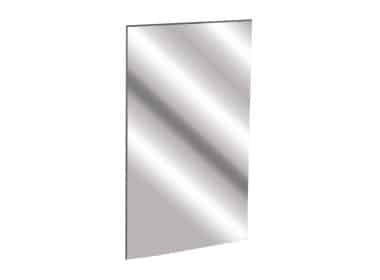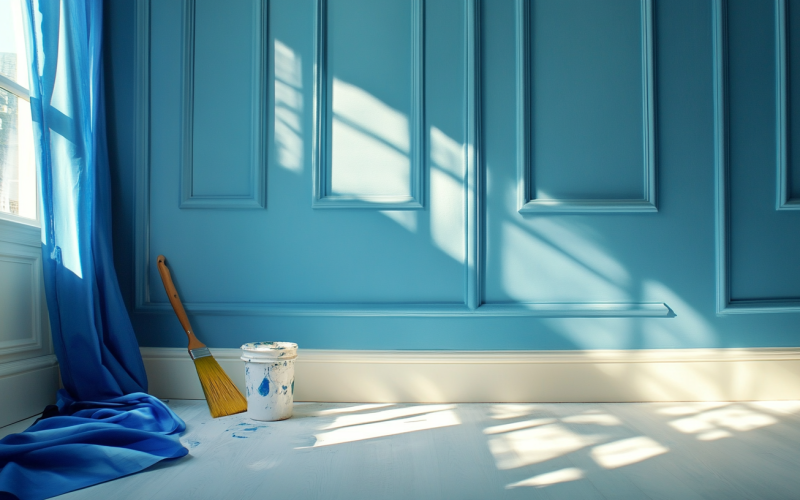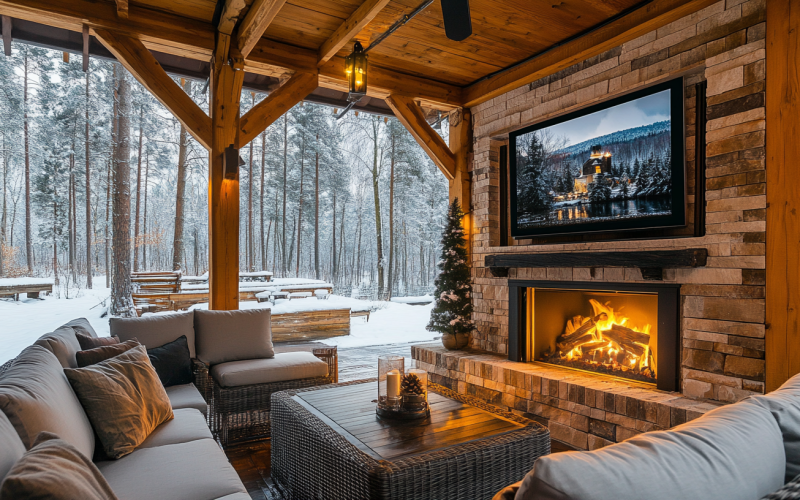It’s easy to get excited about choosing colors and imagining the finished look when gearing up to tackle an interior painting project. However, avoiding common mistakes is important to ensure your paint job looks professional.
Here are 12 things you should never do.
Skipping Surface Preparation
One of the biggest mistakes you can make is skipping the preparation step. Ensure you clean the walls thoroughly before starting painting. Dust and grime can prevent paint from applying properly, leading to uneven coverage and peeling later on.
Remember to fill holes or cracks with spackle and sand them smooth. A well-prepped surface will give you that flawless, professional finish.
Choosing the Incorrect Paint
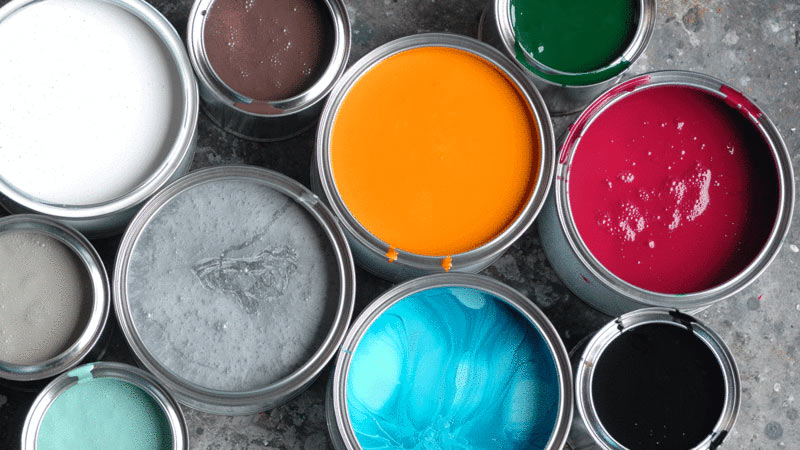
Not all paints are created equal. Consider the type of room you’re working in when making your selection. Opt for a washable and moisture-resistant paint for high-traffic areas or humid rooms like bathrooms.
Also, be sure to choose the correct finish — matte for hiding imperfections, semi-gloss for durability and high-gloss for a shiny look. Some apps can help you select the right color and finish to avoid this common mistake.
Neglecting Primer
Primer is your best friend when tackling a paint job. It creates a uniform surface, enhances adhesion, and can cover up stains or old paint colors. Don’t skip primer when painting over a dark color with a lighter one or applying a fresh coat over new drywall.
Applying one coat of primer followed by one coat of paint will give your walls a more expert finish than two coats of paint alone. This approach will save you time and effort in the long run by reducing the number of applications needed.
Using Low-Quality Brushes and Rollers
Investing in high-quality brushes and rollers can significantly boost the outcome of your painting project. Low-quality tools tend to shed bristles or create unattractive streaks, resulting in an uneven finish. For the best results, use a brush with stiff bristles for edges and corners and a roller with a proper nap length for larger areas.
Not Testing Your Paint
One of the most common mistakes is not testing the paint type and color before committing to it. Lighting and room size can drastically change how a shade looks on your walls compared to how it appears in the store.
Before buying gallons of paint, always test a small patch on your wall and observe how it looks at different times of the day. This simple step can save you from disappointment when the shade turns out differently than expected. Spending a little extra time testing is better than regretting an entire room of the wrong color.
Overloading Your Brush or Roller
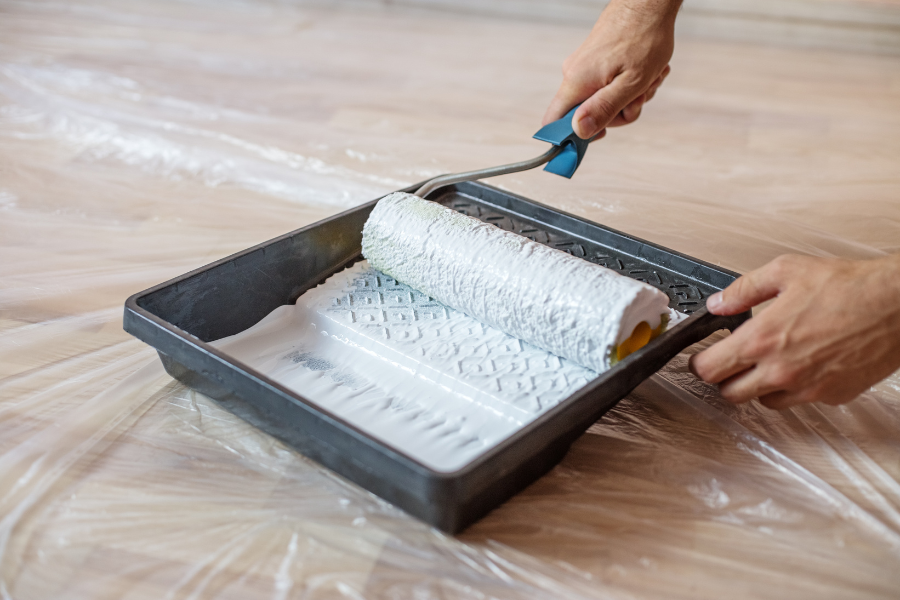
When applying paint, avoid putting too much on your brush or roller. Too much can lead to drips and uneven coverage. Instead, dip your brush or roller into the paint, then gently tap or roll off the excess. Apply it in thin, uniform coats and gradually build up to the desired look.
Using Tape Incorrectly
Painter’s tape is a handy tool but is easy to misuse. Many people don’t press it down firmly enough, causing the paint to bleed under the edges. On the flip side, leaving the tape on too long can result in peeling when removing it.
Press the tape down securely to avoid these issues, ensuring a tight seal. Remove it when the paint is still slightly wet for a crisp, clean edge. If you wait too long, you may need to carefully cut along the edge with a sharp blade to avoid tearing the paint.
Ignoring Proper Technique
How you apply the paint impacts the final result. Use long, even strokes and work in sections for a smooth finish. Start from one side of the room and work your way across, maintaining a wet edge to prevent noticeable lines where coats overlap. When using a roller, roll in a “W” pattern to distribute the paint evenly.
Painting Without Adequate Ventilation

Good ventilation is essential for a successful paint job. Fumes can be strong and potentially harmful if the room is not properly ventilated, so open windows and use fans. Doing this will help the paint dry faster and reduce the risk of respiratory issues.
Rushing
Rushing through your project can lead to various issues, from streaks to uneven coverage. Patience is key to getting a professional-looking finish. Allow each coat to dry fully before applying the next, and give yourself more than enough time to complete the job without cutting corners.
Skipping steps, like not allowing the first coat to dry or failing to properly prep the surface, might seem like it saves time in the moment. However, it can lead to a poor outcome that requires redoing parts of the project. Taking your time results in a smoother, longer-lasting finish.
Buying Too Little Paint
Underestimating how much paint you need can disrupt the flow of your task. Running out in the middle of a job slows you down and can result in slight variations in color if the new batch doesn’t perfectly match the original.
Avoid this by measuring your space and consulting with professionals to estimate how much you’ll need. It’s better to have a little extra on hand for touchups later than to stop midway through to buy more. You can always use leftover paint for your next home maintenance project or keep it for future use.
Failing to Clean up Properly
Once you’ve done your painting, don’t forget about the cleanup. Wash your brushes and rollers immediately to prevent paint from drying on them. Store leftover paint properly for future touch ups, and dispose of unused cans and materials according to local regulations.
Do the Perfect Paint Job
Paying attention to these basics and avoiding rookie mistakes sets you up for a successful project. Following the proper techniques will produce an expert-looking finish that boosts your home’s interior.




